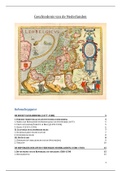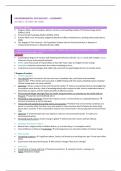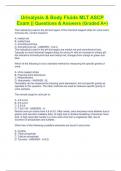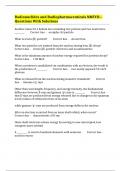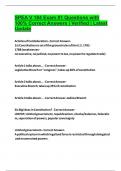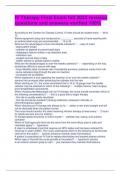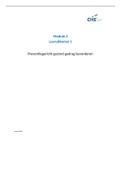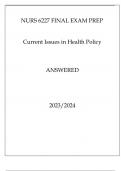Tentamen (uitwerkingen)
BIO 210 - FINAL EXAM REVIEW QUESTIONS WITH 100 % CORRECT ANSWERS | VERIFIED
- Vak
- Instelling
Anatomy - Answer-the study of structure Physiology - Answer-the study of function Metabolism - Answer-all the chemical reactions that happen in our body cells Catabolism - Answer-the breakdown of complex molecules into simpler ones. Catabolic reaction Anabolism - Answer-The building up of compl...
[Meer zien]





